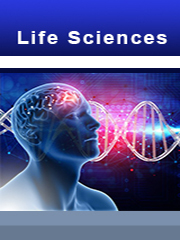Report overview
Thrombosis is may be defined as the formation of blood clot in the blood vessel or lumen part of the blood vessel. Formation of blood clots inside the blood vessel causes disruption of blood flow and it leads to cause death of cells. Deep vein thrombosis (DVT) is one type of thrombosis and it affects larger muscle of thigh. As a result, it causes pain, swelling in the leg and also it causes pulmonary embolism. Deep vein thrombosis (DVT) and pulmonary embolism collectively called as venous thromboembolism (VTE). Deep vein thrombosis is usually affects legs, sometimes it also affects chest, arm and other parts of body. If it happens in brain, lungs and heart then that could cause damage of organ.
This report aims to provide a comprehensive presentation of the global market for Antithrombotic Drugs, with both quantitative and qualitative analysis, to help readers develop business/growth strategies, assess the market competitive situation, analyze their position in the current marketplace, and make informed business decisions regarding Antithrombotic Drugs. This report contains market size and forecasts of Antithrombotic Drugs in global, including the following market information:
Global Antithrombotic Drugs Market Revenue, 2018-2023, 2024-2029, ($ millions)
Global Antithrombotic Drugs Market Sales, 2018-2023, 2024-2029, (K Units)
Global top five Antithrombotic Drugs companies in 2022 (%)
The global Antithrombotic Drugs market was valued at US$ 20110 million in 2022 and is projected to reach US$ 26670 million by 2029, at a CAGR of 4.1% during the forecast period. The influence of COVID-19 and the Russia-Ukraine War were considered while estimating market sizes.
Increasing prevalence of cardiac related and cancer diseases is one of the factor which is expected to drive the overall anti thrombotic drugs. The significant growth in a market over a forecast period is mainly attributed by increasing hereditary diseases. Globally, increasing hypertension also expected to drive the market over the forecast period. Increasing awareness about life-threatening diseases among people is a key factor and that is expected to fuel the sales of overall anti thrombotic drugs during 2016-2024. Availability of branded drugs along with generics is expected to increase the market revenue. Changing lifestyles and lack of physical activity is one of the factor which affects the growth of the market moderately during the forecast period.
We surveyed the Antithrombotic Drugs manufacturers, suppliers, distributors and industry experts on this industry, involving the sales, revenue, demand, price change, product type, recent development and plan, industry trends, drivers, challenges, obstacles, and potential risks.
Total Market by Segment:
Global Antithrombotic Drugs Market, by Type, 2018-2023, 2024-2029 ($ Millions) & (K Units)
Global Antithrombotic Drugs Market Segment Percentages, by Type, 2022 (%)
Apixaban
Debigatran
Edoxaban
Fondaparinux
Heparin
Rivaroxaban
Global Antithrombotic Drugs Market, by Application, 2018-2023, 2024-2029 ($ Millions) & (K Units)
Global Antithrombotic Drugs Market Segment Percentages, by Application, 2022 (%)
General Pharmacies
Hospital Pharmacies
Online Retailers
Drug Stores
Global Antithrombotic Drugs Market, By Region and Country, 2018-2023, 2024-2029 ($ Millions) & (K Units)
Global Antithrombotic Drugs Market Segment Percentages, By Region and Country, 2022 (%)
North America
US
Canada
Mexico
Europe
Germany
France
U.K.
Italy
Russia
Nordic Countries
Benelux
Rest of Europe
Asia
China
Japan
South Korea
Southeast Asia
India
Rest of Asia
South America
Brazil
Argentina
Rest of South America
Middle East & Africa
Turkey
Israel
Saudi Arabia
UAE
Rest of Middle East & Africa
Competitor Analysis
The report also provides analysis of leading market participants including:
Key companies Antithrombotic Drugs revenues in global market, 2018-2023 (Estimated), ($ millions)
Key companies Antithrombotic Drugs revenues share in global market, 2022 (%)
Key companies Antithrombotic Drugs sales in global market, 2018-2023 (Estimated), (K Units)
Key companies Antithrombotic Drugs sales share in global market, 2022 (%)
Further, the report presents profiles of competitors in the market, key players include:
Bristol myers squibb pharma
Abbott laboratories
Pliva
Sandoz
Pfizer
Pharmacia
Watson laboratories
Zydus pharmaceuticals usa
Bristol-Myers Squibb
Outline of Major Chapters:
Chapter 1: Introduces the definition of Antithrombotic Drugs, market overview.
Chapter 2: Global Antithrombotic Drugs market size in revenue and volume.
Chapter 3: Detailed analysis of Antithrombotic Drugs manufacturers competitive landscape, price, sales and revenue market share, latest development plan, merger, and acquisition information, etc.
Chapter 4: Provides the analysis of various market segments by type, covering the market size and development potential of each market segment, to help readers find the blue ocean market in different market segments.
Chapter 5: Provides the analysis of various market segments by application, covering the market size and development potential of each market segment, to help readers find the blue ocean market in different downstream markets.
Chapter 6: Sales of Antithrombotic Drugs in regional level and country level. It provides a quantitative analysis of the market size and development potential of each region and its main countries and introduces the market development, future development prospects, market space of each country in the world.
Chapter 7: Provides profiles of key players, introducing the basic situation of the main companies in the market in detail, including product sales, revenue, price, gross margin, product introduction, recent development, etc.
Chapter 8: Global Antithrombotic Drugs capacity by region & country.
Chapter 9: Introduces the market dynamics, latest developments of the market, the driving factors and restrictive factors of the market, the challenges and risks faced by manufacturers in the industry, and the analysis of relevant policies in the industry.
Chapter 10: Analysis of industrial chain, including the upstream and downstream of the industry.
Chapter 11: The main points and conclusions of the report.
